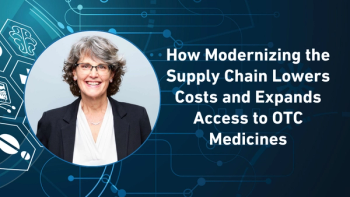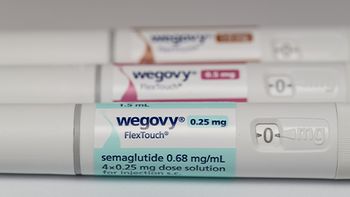
- Pharmaceutical Commerce - November/December 2017
Investigative report slams drug distributors over opioid-abuse epidemic
Intent of the 2016 Ensuring Patient Access and Effective Drug Enforcement Act is questioned
There is plenty of blame to go around for all supply chain participants of opioid medications—and their abuse—including manufacturers, distributors, physicians, pharmacies and law enforcement. And even though a White House panel issued an
Still, with an
Suspicious order monitoring
The heart of the CBS/WashPost report is that “A handful of members of Congress, allied with the nation’s major drug distributors, prevailed upon the [Drug Enforcement Administration; DEA] and the Justice Department to agree to a more industry-friendly law, undermining efforts to stanch the flow of pain pills.” That contention is promoted by DEA’s former head of the Office of Diversion Control, Joseph Rannazzisi, who left DEA in late 2015, and now works as a consultant to the states suing the industry. 60 Minutes called him “one of the most important whistleblowers CBS has ever interviewed” in the telecast.
The report’s contention is that a change in DEA policy written into S. 483 in 2016—to define “imminent danger” from something that DEA could enforce at will by shutting down distributor warehouses or retail pharmacies, to one “requiring that the agency establish ‘a significant and present risk of death or serious bodily harm that is more likely than not to occur.’” That change, the report contends, essentially shut down DEA’s enforcement activities against distributors who were not monitoring “suspicious” drug orders carefully enough and allowing high volumes of opioid drugs to be sent to individual sites. According to Rannazzisi, the industry’s motivation for this change was the desire to maximize revenues from the drug sales without DEA interference.
That intention is belied by the near half-billion dollars in fines that have been paid by distributors over the past decade or so involving opioid distribution and by the bad PR of opioid distribution itself—the Big Three distributors and others have seen stock price hits as the news of the CBS/WashPost report came out. The Healthcare Distribution Alliance, which spearheaded the lobbying effort for the S. 483, contends that “DEA remains fully empowered to take quick action against a DEA registrant (i.e., prescribing physician, pharmacist, distributor, manufacturer);” DEA can also engage in a 30-day corrective action negotiation with a distributor to change a distribution pattern. The CBS/Washpost’s own data show that DEA’s “immediate suspension orders” had declined from 65 in 20111 to a handful in 2015—even before S. 483 was passed.
Industry hasn't been idly watching the legal wrangling in Washington; over many years, a business practice of
In a
The CBS/WashPost report also has a distinct political edge to it, claiming that a “handful” of legislators were involved in passing S. 483 (one version of the bill had 16 bipartisan cosponsors, and the law passed both houses of Congress by essentially unanimous consent), and in particular, that one Congressional sponsor, Tom Marino (R-PA) is now the White House nominee as director of the Office of National Drug Control Policy (the "drug czar").
Is the industry—distributors and chain pharmacies in particular—being unfairly maligned? Hard to give a definite answer—past DEA enforcement activities have certainly blackened its reputation. Drug wholesalers have long contended that it is not their place to act as DEA “subcontractors” in enforcing the Controlled Substances Act (no one has demonstrated that wholesalers were selling drugs at will to nonlicensed pharmacies or physicians); S. 483 was meant to clarify how industry and DEA could work together. If the many enforcement actions that were taken while Ranazzisi’s Office of Diversion Control was most active, and abuse continued to rise, other drivers needed to be considered. It is clear that today, as abuse of legal opioid medications continues, more needs to be done.
Articles in this issue
about 8 years ago
The changing paradigm in primary packaging of therapeutic proteinsabout 8 years ago
Traceability end-of-year updateabout 8 years ago
Big Pharma requires big help in protecting CRT productsabout 8 years ago
Pre-approval access and real-world evidence: a win-win propositionabout 8 years ago
Deloitte and Cardinal Health team up for patient support servicesabout 8 years ago
Managing pharma auto fleetsabout 8 years ago
A conversation with Jim Cleary, AmerisourceBergenabout 8 years ago
If CVS Health-Aetna doesn’t happen, something else willabout 8 years ago
123 countries participate in Pangea X to fight counterfeit drugsNewsletter
Stay ahead in the life sciences industry with Pharmaceutical Commerce, the latest news, trends, and strategies in drug distribution, commercialization, and market access.





